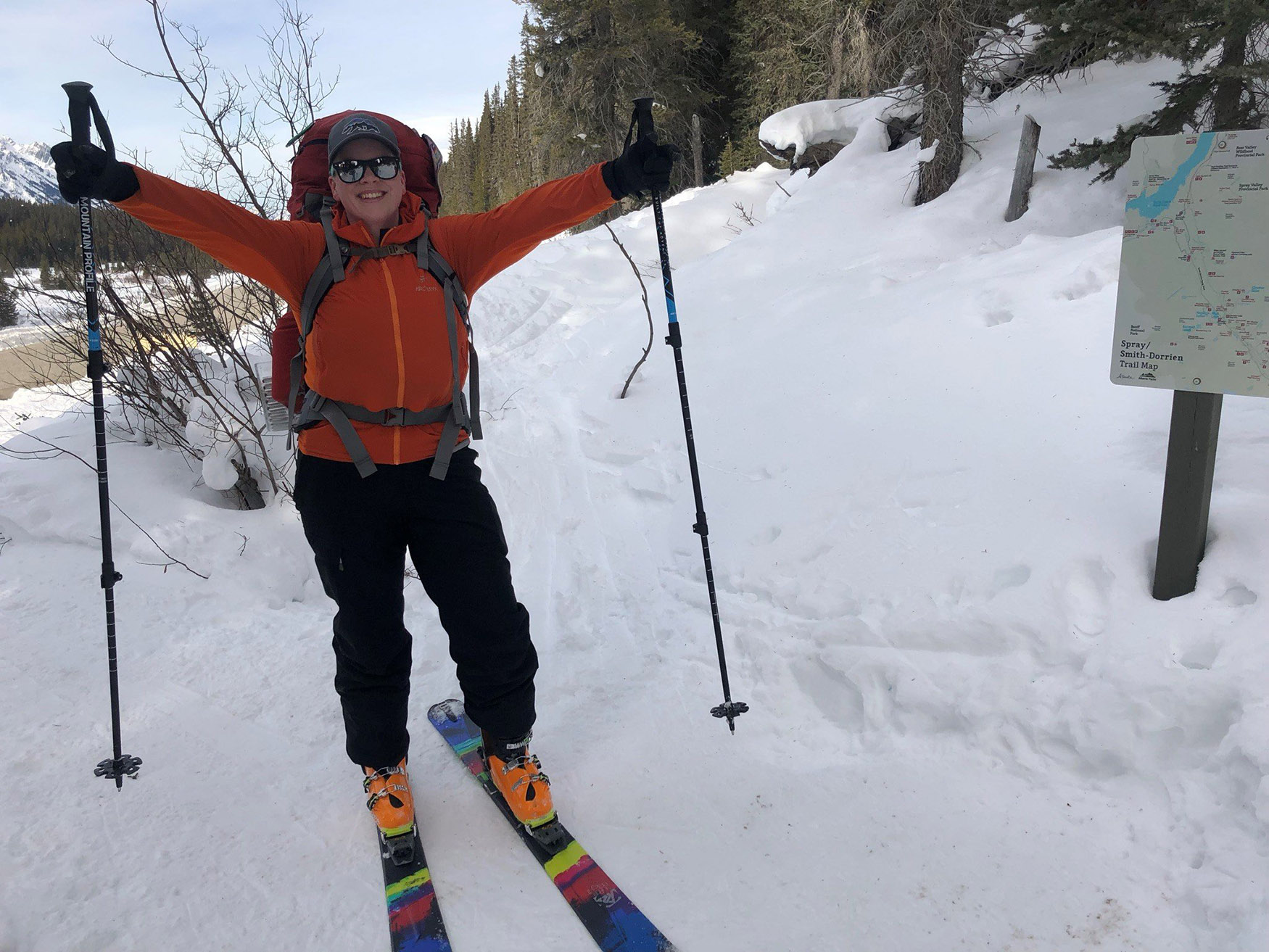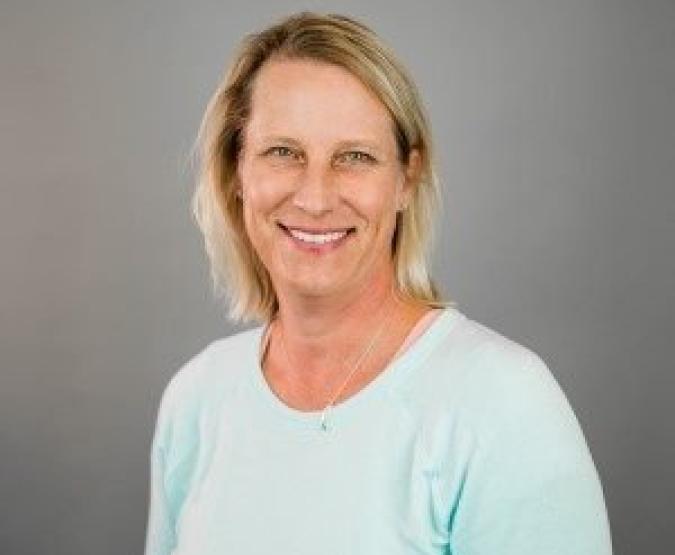Banff surgeon uses new implant technology for the first time in Canada
The first BioBrace procedure outside the United States takes place at Banff Mineral Springs Hospital

March 29, 2023
By Peter Rybar, Social Media and Storytelling Advisor, Covenant Health
Grey Leslie, 35, has experienced knee issues related to hypermobility their whole life. When offered a first-of-its-kind-in-Canada procedure to repair their knee using a BioBrace®, they jumped at the chance.
“I’ve had three prior surgeries on the same knee, lots of instability, partial dislocations and one full dislocation,” says Grey. “I still did things like play hockey and hike but always had that nagging instability. When Dr. Hiemstra explained what [the BioBrace] was and what it could do for me, I was on board right away.”

Grey Leslie has remained active their whole life despite their knee issues.
The BioBrace is an innovative new implant designed for use in procedures to repair tendons and ligaments in the knee, shoulders and ankles. It acts as a scaffold, reinforcing the repair and promoting healing.
Dr. Laurie Hiemstra, an orthopedic surgeon with the Banff Sport Medicine team at Banff Mineral Springs Hospital, used the new technology in a revision procedure (a surgery to repair a previous ligament replacement) on Grey’s knee. It was the first time the BioBrace had been used in a procedure outside the United States. The BioBrace is not yet approved for use in Canada, but Laurie obtained a one-time use license through Health Canada’s Special Access program for the procedure.
In 2020, she performed a surgery to replace a ligament in Grey’s kneecap with a tendon from a deceased donor. But after a few years, it deteriorated because of the kneecap’s inherent instability. Considering this history, using the BioBrace to give Grey more knee stability seemed like the perfect solution.
The BioBrace was originally developed by Biorez, a company acquired by CONMED in August 2022. Kevin Rocco, former CEO and founder of Biorez and now vice president of Bioinductive Technologies with CONMED, saw a gap in sports medicine and sought to fill it.
“We founded Biorez to solve a massive unmet need in sports medicine, in that tendon and ligament surgeries often fail to heal and have long recovery times,” says Kevin. “We wanted to develop a technology that helped reinforce the initial repair but that could also help the healing process itself.”

Synthetic products that help add stability to a patient’s knee have existed for some time now. Where the BioBrace stands out is the use of both synthetic and biological materials.
“Traditionally, surgeons have been able to use either synthetic or biologic materials, each with their own pros and cons,” says Kevin. “We took the pros out of each category to make a hybrid material, which nobody had done for soft tissue applications.”

The BioBrace features spongelike collagen enhanced with microfilaments. It reinforces ligament and tendon repair throughout the healing process while supporting tissue regrowth. As healing progresses, it is gradually absorbed until the patient’s anatomy is restored to its natural state.
“The problem with most of the synthetics out there is that if it’s strong enough, it doesn’t have the biologic properties to help with healing. And if it has good biologic properties, it’s not strong enough. But the BioBrace has both of those properties,” says Laurie.

When first introduced to the BioBrace, Laurie was quick to see its value for her practice. “It has some great science behind it with good face validity as well as a very low risk,” she says. “I can think of a lot of conditions that I would like to use the BioBrace for.”
Laurie was also intrigued with the BioBrace's potential for speeding up recovery times. “Because you can minimize the amount of surgery by taking the ligament out of a box instead of harvesting it from elsewhere, such as the patient’s hamstring, it helps to enhance their recovery,” she says.
While CONMED can’t yet make any official claims about faster recovery times for patients or fewer revision surgeries, Laurie has been impressed with the results.
“When I met with [Grey] three weeks post-surgery, they were doing amazing,” she says. “They had a full range of motion and no swelling. It almost looked like they’d had no surgery at all; their instability symptoms were gone.”
Grey was also quite pleased following the surgery. “I’ve been through a lot of surgeries, and so far, this one has been the smoothest process.”

Grey Leslie was able to walk out of Banff Mineral Springs Hospital using crutches post-surgery.